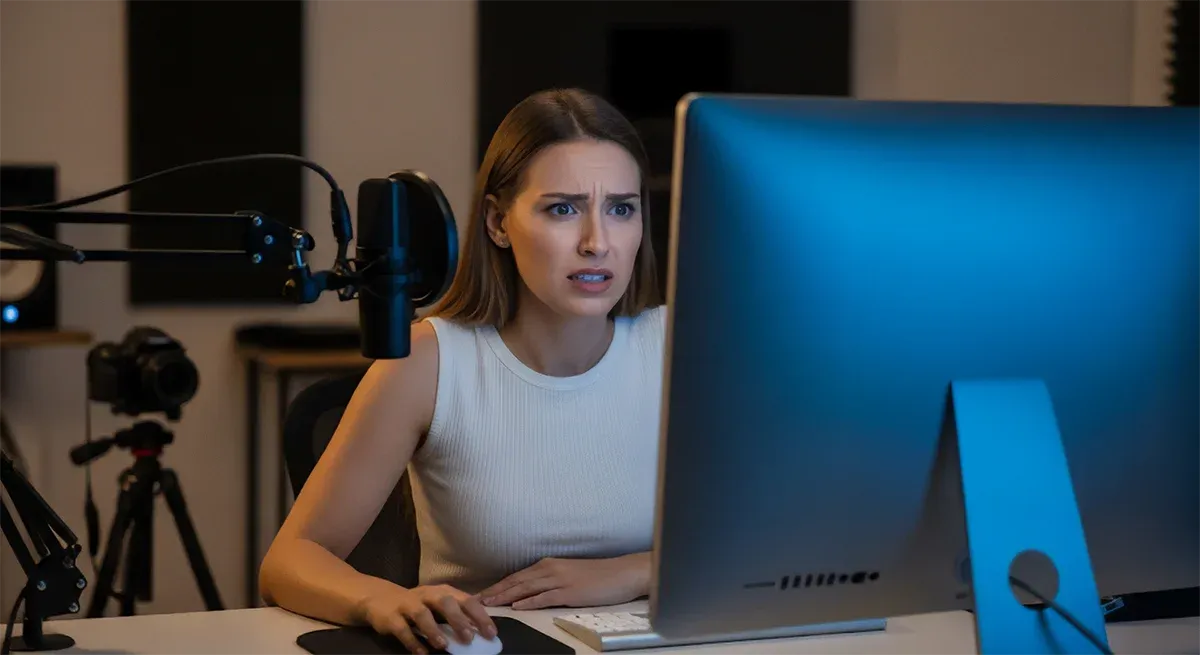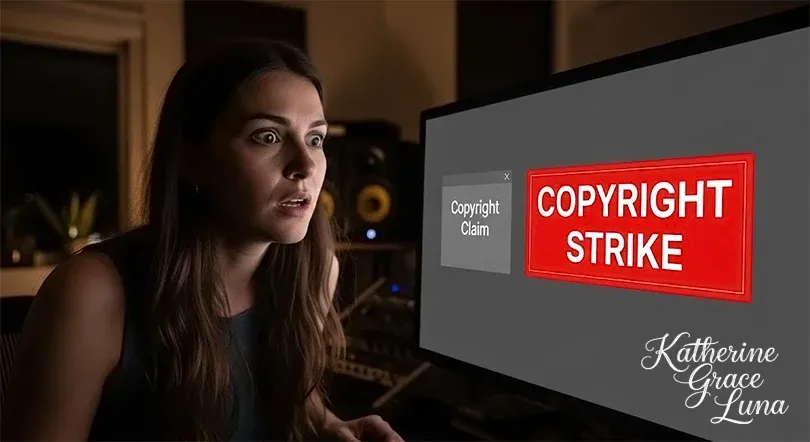Why YouTube's Copyright System Feels Like Walking Through a Minefield in 2025

Ever uploaded a video only to wake up to that dreaded email? "A copyright claim has been made on your video." If you're a content creator in 2025, you're playing a game where the rules keep changing and one wrong move could nuke your entire channel.
Here's the reality: YouTube processes over 729 million copyright claims in just six months. That's not a typo. And with the platform's automated systems getting more aggressive by the day, even playing your own music can trigger a strike. Yeah, you read that right – musicians have gotten strikes for performing their own songs.
The Three-Strike Rule That Terrifies Every Creator
YouTube's copyright system works like baseball, except instead of being benched, you lose everything you've built. Get three strikes in 90 days, and your channel vanishes. Not just suspended – completely terminated, along with any other channels linked to your account.
Here's what happens with each strike:
- First strike: You lose monetization and livestreaming for 90 days
- Second strike: Same restrictions, but now you're on thin ice
- Third strike: Channel termination, permanent ban from YouTube
The kicker? Deleting the offending video won't remove the strike. Once you get that notification from no-reply@youtube.com, the damage is done. You have to complete YouTube's Copyright School (yes, that's a real thing) and wait out the full 90 days.
Claims vs. Strikes: Know the Difference or Pay the Price

Not all copyright issues are created equal. A copyright claim means someone's Content ID system detected their material in your video. The copyright holder can monetize your video, block it, or just track its performance. Annoying? Absolutely. Channel-ending? Usually not.
A copyright strike is the nuclear option. This happens when a copyright holder manually files a DMCA takedown request. Your video gets removed immediately, and your channel takes a serious hit. The scary part? Fair use doesn't automatically protect you. Even if you're creating legitimate criticism, education, or commentary, you might still face strikes first and have to fight them later.
The Automated Nightmare Nobody Talks About
YouTube's Content ID system scans every single upload – even private videos – against a massive database of copyrighted content. The system is so sensitive that streamers have gotten strikes for:
- Background music in video games (even with in-game audio disabled)
- 29 seconds of a toddler dancing to a song
- Using YouTube's own royalty-free music library in archived Twitch streams
- Teaching materials with brief educational clips
The most infuriating part? Writing "no copyright infringement intended" or giving credit does absolutely nothing. It's like leaving a note saying "no stealing intended" while walking out of a store with unpaid merchandise.
How to Survive in This Copyright Dystopia
After watching countless creators lose their channels, here's what actually works:
Create everything yourself. Original content can't get copyright strikes. Period. If you must use others' material, get written permission or proper licensing before uploading.
Use platform-specific libraries carefully. YouTube's Audio Library is safe for YouTube, but that same music might get you banned on Twitch or TikTok. Each platform has different rules, and what's okay on one can destroy you on another.
Document everything obsessively. Keep records of creation dates, licensing agreements, and permissions. When (not if) you get a false claim, this documentation is your lifeline.
Never ignore the 7-day warning. Some copyright holders give you a week to remove content before filing a strike. Use it. Your pride isn't worth losing your channel.

The False Claims Crisis Getting Worse
Recent investigations revealed something disturbing: 57% of DMCA notices target competing businesses rather than actual piracy. Scammers create fake companies, backdate content, then file takedowns against legitimate creators. The system is so broken that 99.95% of URLs in Google's DMCA database weren't even publicly accessible.
Musicians regularly get strikes for playing their own music because some random distributor claims ownership. Critics receive takedowns for negative reviews. Teachers can't use educational clips without risking their channels. The system assumes guilt until you prove innocence, and even then, you're not safe.
What's Coming Next
The landscape shifted dramatically in 2024-2025. Courts are finally pushing back, with judges now requiring DMCA filers to verify copyright eligibility before filing takedowns. But YouTube hasn't changed its automated systems yet, and creators are still getting hammered daily.
The real problem? The DMCA was written in 1998 for a completely different internet. It's like using telegraph rules to govern smartphones. Until we get real reform, creators must operate defensively, treating every upload like it could be their last.
The bottom line: In YouTube's world, you're guilty until proven innocent, and even innocence won't protect you from the next automated takedown. The only winning move is to never use anyone else's content, ever. Not exactly the creative, collaborative internet we were promised, is it?
If you're serious about content creation in 2025, treat copyright like radioactive material. One wrong touch, and everything you've built disappears. Stay safe out there, creators.
